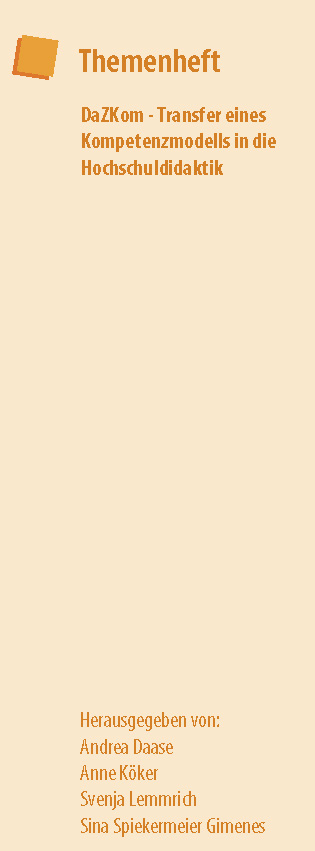Learner text analysis as a learning opportunity in the field of language diagnostics
DOI:
https://doi.org/10.11576/hlz-5256Keywords:
German as a Second Language, multilingualism, language diagnosticsAbstract
The learning opportunity for learners’ text analysis, which is the focus of this article, combines the use of linguistic description categories with the findings of second language acquisition research, especially with regard to syntax development in German (Grießhaber, 2013, 2014, 2019). The second language didactic foundation is based on the concept of scaffolding (Gibbons, 2006; Kniffka, 2010, 2012), in which the analysis of students’ linguistic prerequisites forms a basis for language-sensitive lesson planning. The aim of this learning opportunity is to support prospective teachers in developing diagnostic skills to identify learner-specific language development. Within the framework of analyzing an authentic learners’ text, the students learn about the goals and specifics of the language diagnostic procedure profile analysis and practice ascertaining the linguistic status of the students in the German language as well as deriving consequences for language support. Following the presentation of the learning opportunity, the article discusses the choice and suitability of linguistic descriptive categories for conducting learner text analyses (Dietze, 2021) as well as the possibilities of dovetailing diagnostics and support in the sense of the concept of the zone of proximal development (Vygotskij, 2002).
Downloads
Published
How to Cite
Issue
Section
License
Copyright (c) 2024 Lesya Skintey

This work is licensed under a Creative Commons Attribution-ShareAlike 4.0 International License.
Sämtliche Inhalte der HLZ werden freigegeben unter der Creative-Commons-Lizenz Namensnennung, Weitergabe unter gleichen Bedingungen, Version 4.0 International (CC BY-SA 4.0). Die Urheber_innen und die Rechteinhaber_innen der in der HLZ veröffentlichten Beiträge gewähren grundsätzlich allen Nutzer_innen unwiderruflich das freie, weltweite Zugangsrecht zu diesen Veröffentlichungen. Unter der Bedingung, dass Autor_innen und Herausgeber_innen gemäß der Zitationshinweise sowie die Lizenz als »Lizenz: CC BY-SA 4.0« einschließlich der untenstehenden Lizenz-URL genannt werden, dürfen die Beiträge der HLZ vervielfältigt, weitergereicht und auf beliebige Weise genutzt werden, auch kommerziell und ebenso online wie in gedruckter oder anderer Form. Auch die Bearbeitung ist erlaubt unter der zusätzlichen Bedingung, dass das neu entstandene Werk als Bearbeitung gekennzeichnet wird und im Falle einer Veröffentlichung unter derselben Lizenz wie in der HLZ freigegeben wird.





